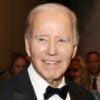This week the House Strategic Communications and Public Diplomacy Caucus got off to a good start in its latest efforts to explore the Obama administration’s new strategy for engaging foreign publics.
Room 121 in the Canon House office building was quickly filled as the Caucus held its first briefing on Thursday. Launched in March, the bipartisan group of Representatives is committed to improving the U.S. performance in the war of ideas. The Caucus hosted Administration officials from the primary agencies involved in the White House’s interagency strategy for public diplomacy and strategic communications including: Ben Rhodes, Deputy National Security Adviser for Strategic Communications; Rosa Brooks, Senior Adviser to the Undersecretary of Defense for Policy; and Kitty DiMartino, Chief of Staff for Under Secretary for Public Diplomacy and Public Affairs. The panel outlined the goals and challenges of addressing interagency coordination and a need to implement a number of strategic imperatives.
The Daily Signal depends on the support of readers like you. Donate now
Relaying the conclusions of the National Security Council’s 1055 report, each panelist took a moment to focus on the Obama administration’s “whole of government” approach to addressing public diplomacy and strategic communications. This concept embodies the idea that messaging is the responsibility of every agency of the U.S. government. While the State Department is traditionally charged with outreach and engagement with foreign publics, the State Department bureaucracy and its entrenched diplomatic culture often makes public diplomacy outreach difficult and cumbersome. The Defense Department, on the other hand, has seen recent successes in implementing a strategic communications strategy. The engagement of DoD in Afghanistan and Iraq has meant that funding and assets have flowed to the Pentagon. Balancing and coordinating foreign outreach responsibilities is something the National Security Council will have to work on in order to satisfy both sides. The purpose of the briefing in fact was to explore why the administration summarily rejected the idea of coordinating Center for Strategic Communication and Public Diplomacy in its National Communications Strategy.
Thursday’s caucus briefing was an enlightening introduction to the Administration’s thinking on strategic communications and public diplomacy. In institutional terms, however, the White House has a long way to go before solving the interdepartmental conflicts that still exist. To do this, Congress must become an active participant, and Congressmen Mac Thornberry and Adam Smith have gotten off to a very respectable start.






























